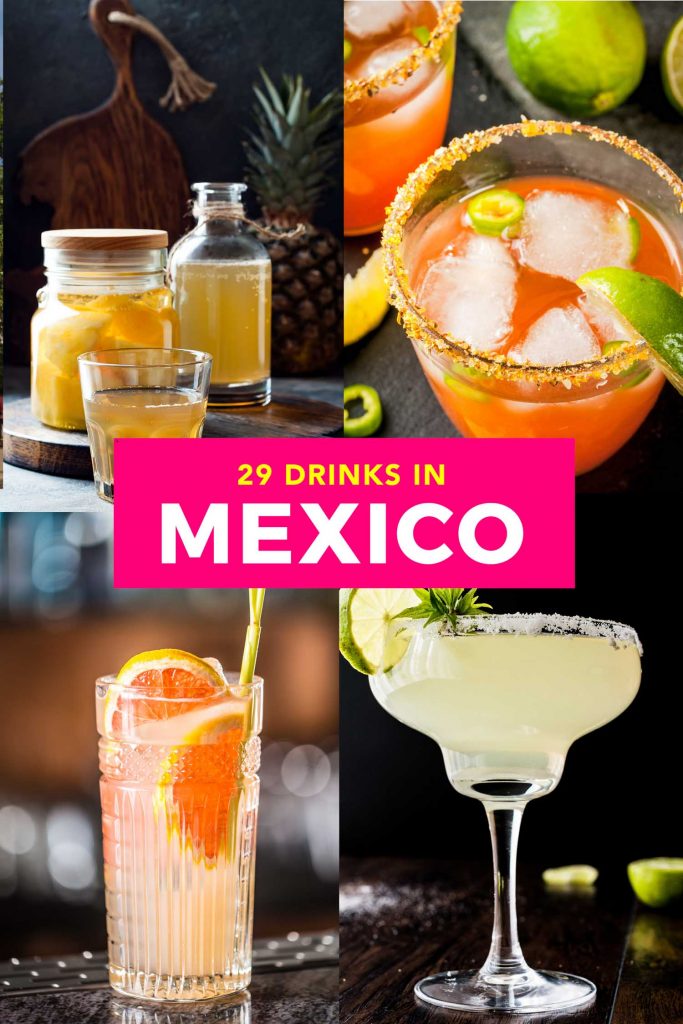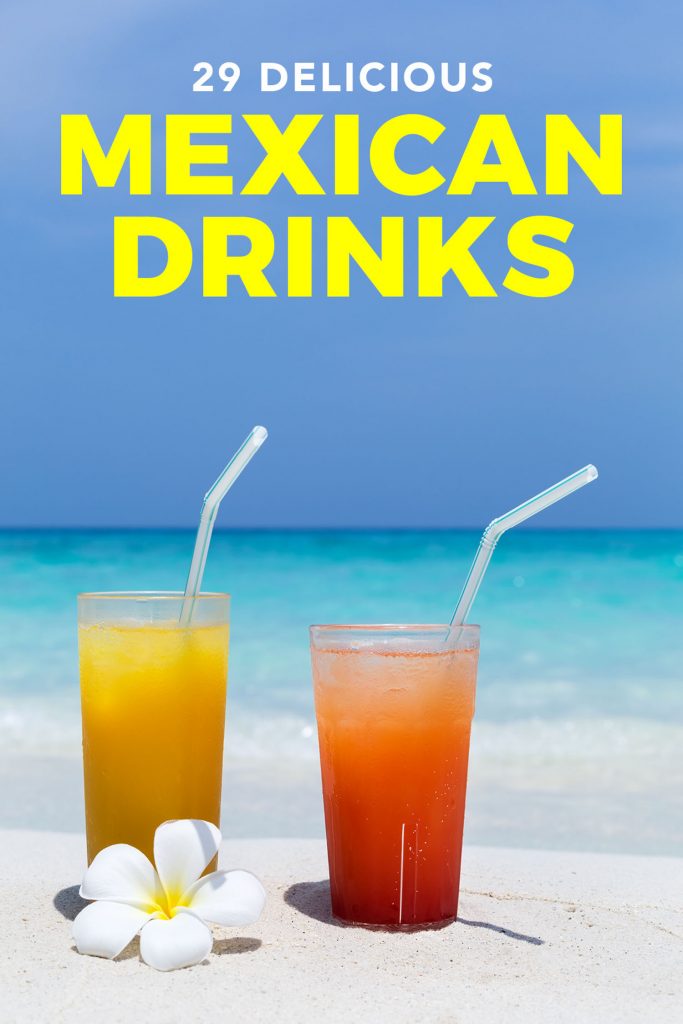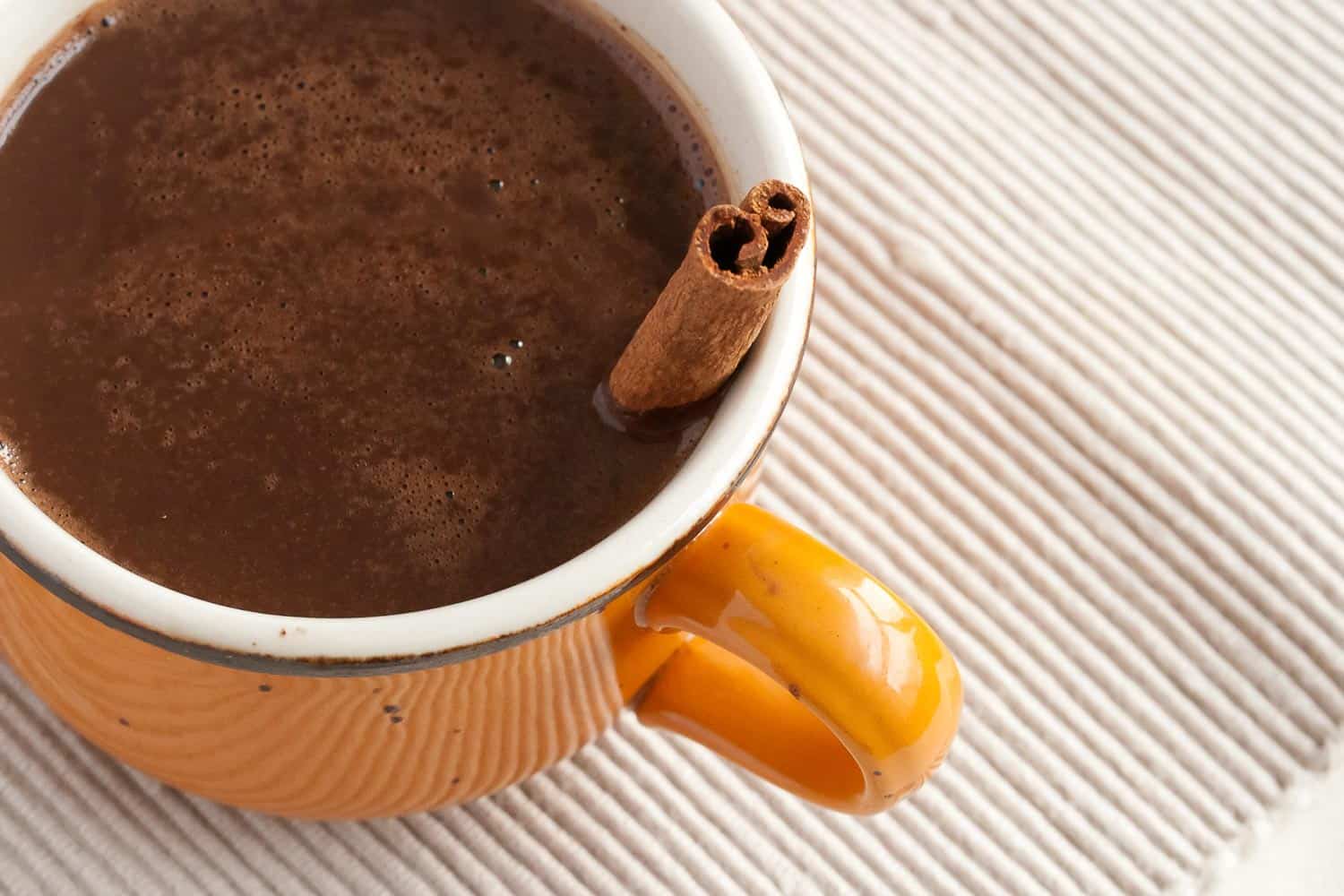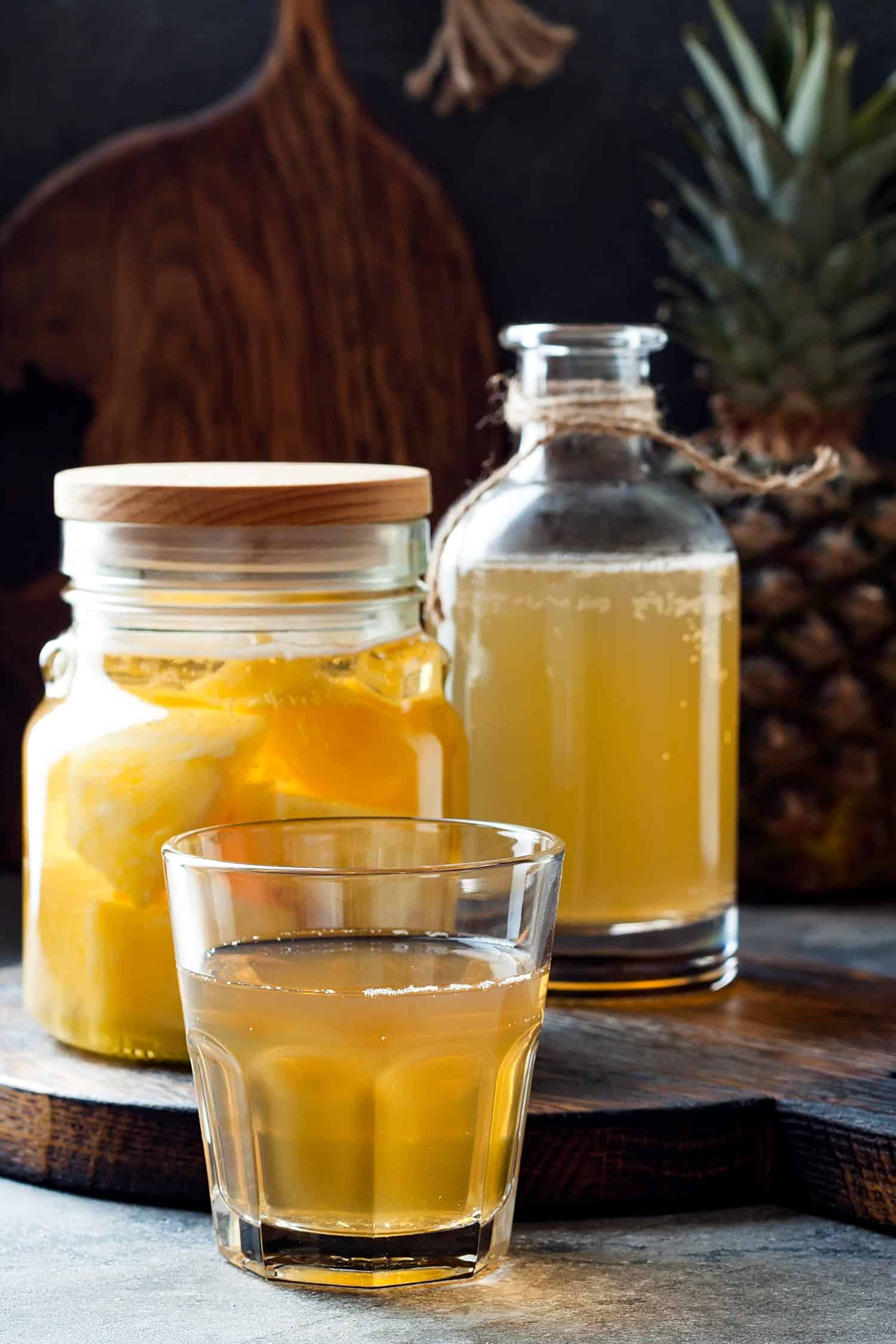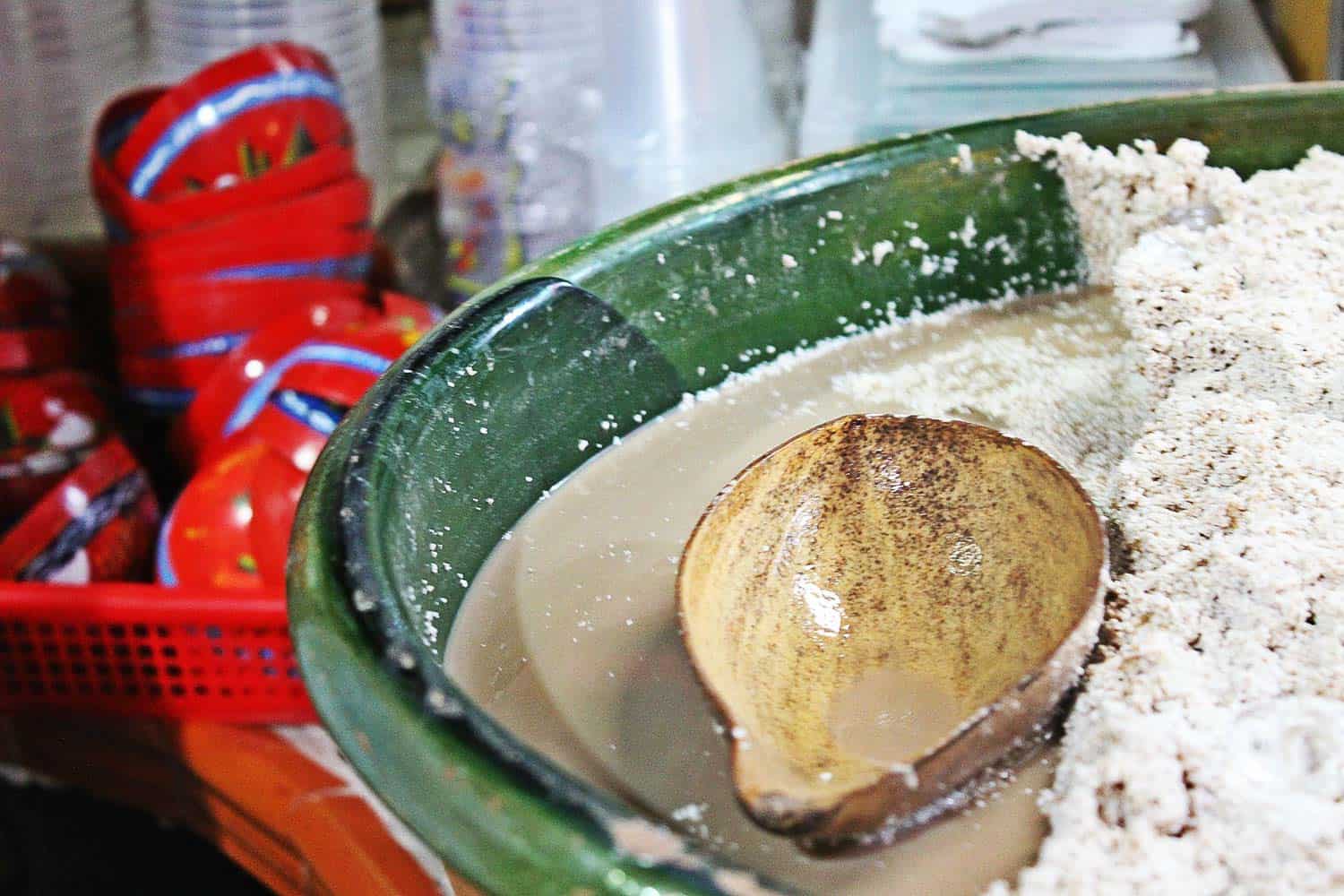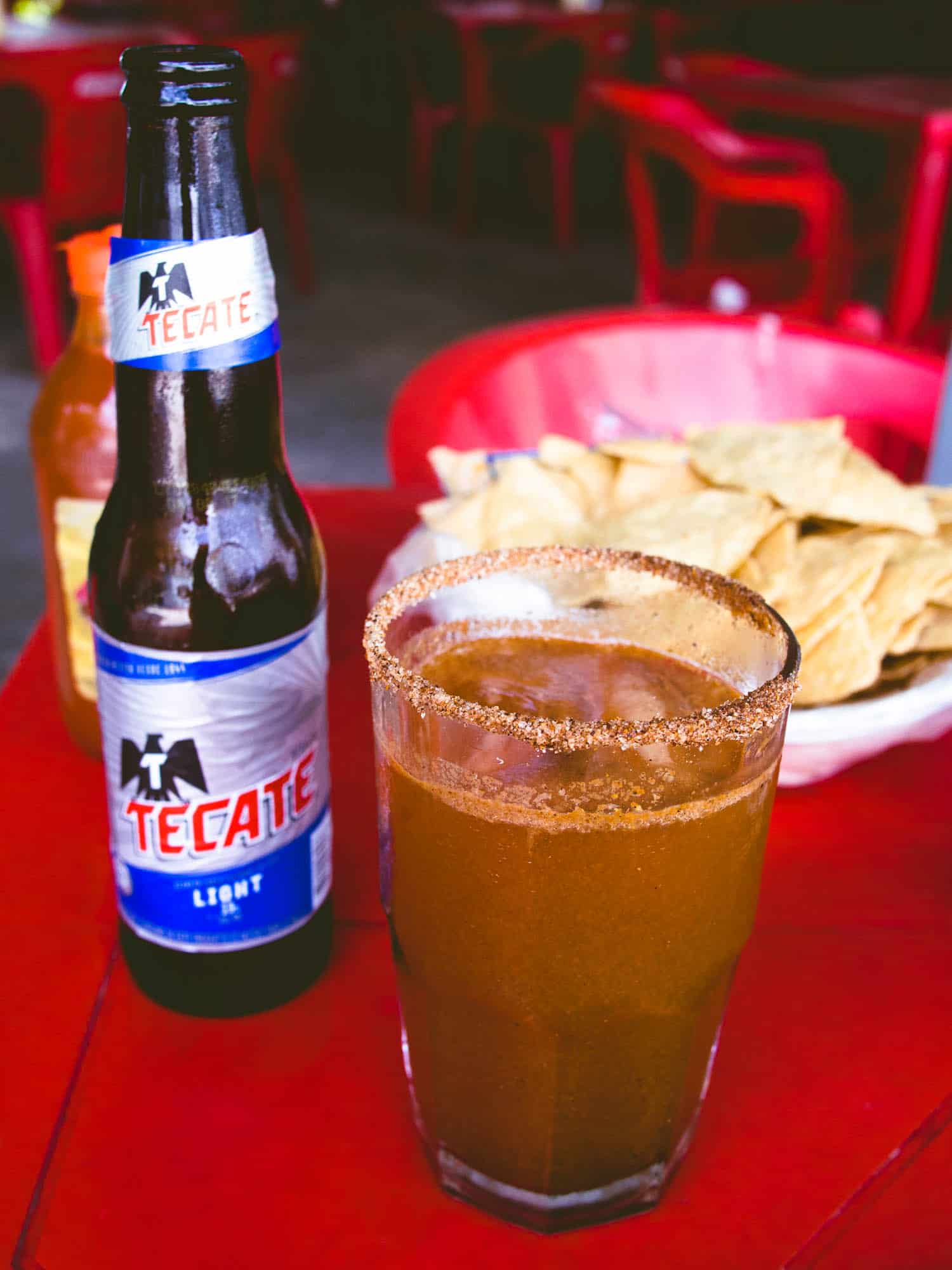Of course you’ve heard of tequila, mezcal and maybe even reposado. They are all delicious but I wanted to introduce you to some drinks in Mexico you may not be familiar with.
Sometimes we forget just how large Mexico is.
One of the best parts is discovering how food and drink change from region to region and sometimes city to city.
This is my favourite part of travel, to discover what is the local flavour.
PLANNING A HOLIDAY IN MEXICO?
Playa del Carmen Travel Guide
La Condesa: The Best Neighbourhood in Mexico City
27 Things to Do in Colima Mexico
And fortunately Mexico has lots of opportunities for this, from And don’t forget Mexican wine, it’s not found everywhere but if you can find it try it!
‘Non-Alcoholic Drinks in Mexico
Although Mexico has some of the most famous cocktails around the world, there are a lot of fantastic drinks in Mexico without a drop of alcohol.
The country takes advantage of fresh ingredients, and there are Mexican drinks you cannot find anywhere else in the world.
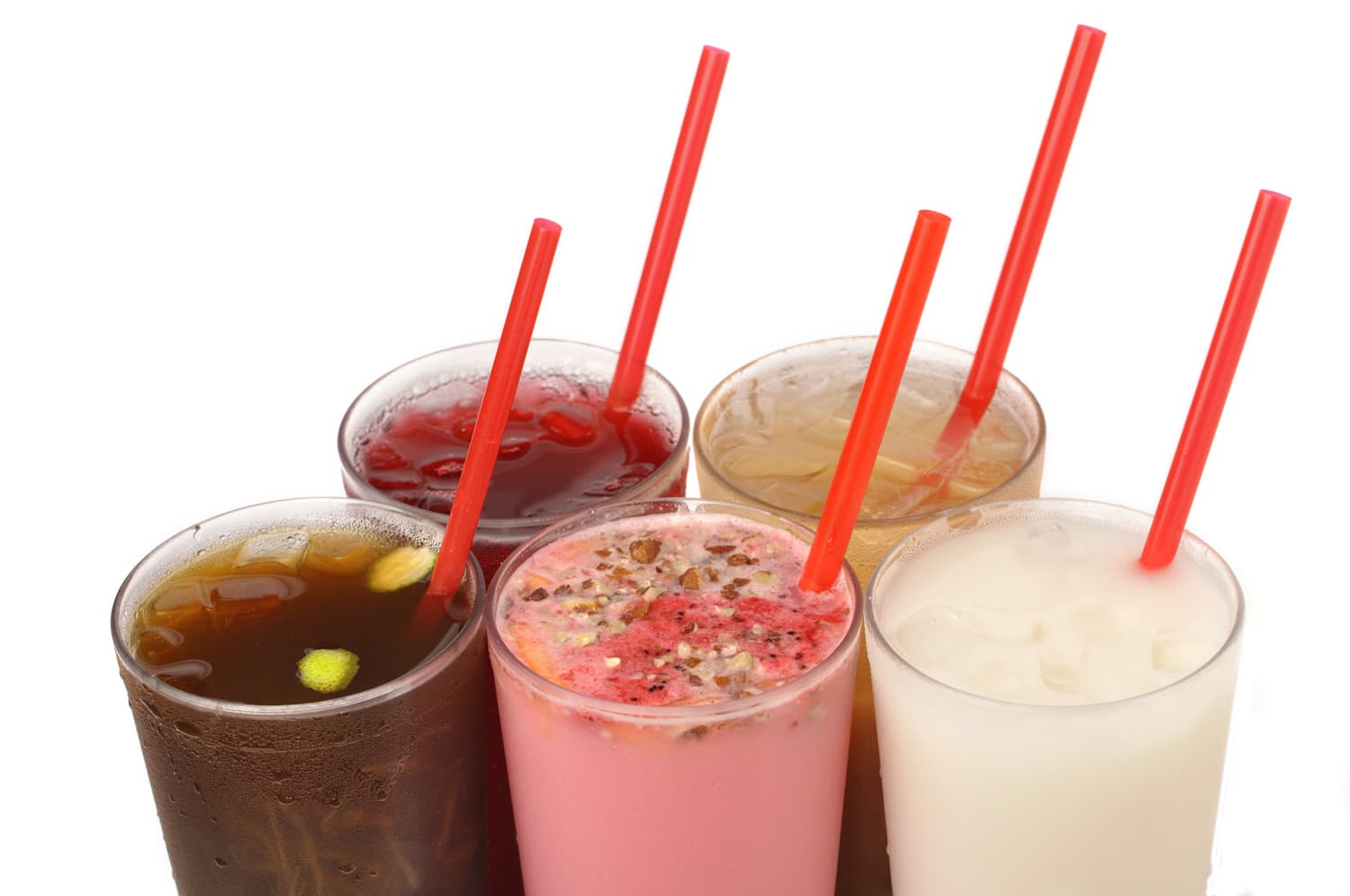
Aguas Frescas
Literally translated to fresh waters, you could spend an entire Mexican holiday drinking all the fresh fruit juices.
Agua fresca is usually a fruit or cereal (such as corn or rice) with sugar and water. Depending on where you go they can have A LOT of sugar as the local taste can be very sweet.
The most common agua fresca are:
- tamarindo: tamarind, which is a pod from a fruit. It tastes spicy but like all-spice not chili
- jamaica: this red drink is made from the hibiscus flower. It’s similar to a light cranberry flavour
- horchata: a milky looking drink they may have cinnamon in it, like a light milkshake.
If you eat at a traditional Mexican restaurant these three are almost always on the menu along with juice made from seasonal Mexican fruit.
Food in Mexico: 30 Dishes to Try
They are always included for free in a set lunch, also known as a menu del dia at local spots. And although they come with a plastic straw I urge you to travel with your own.
These silicone straws are cheap and easy to stick in a bag.
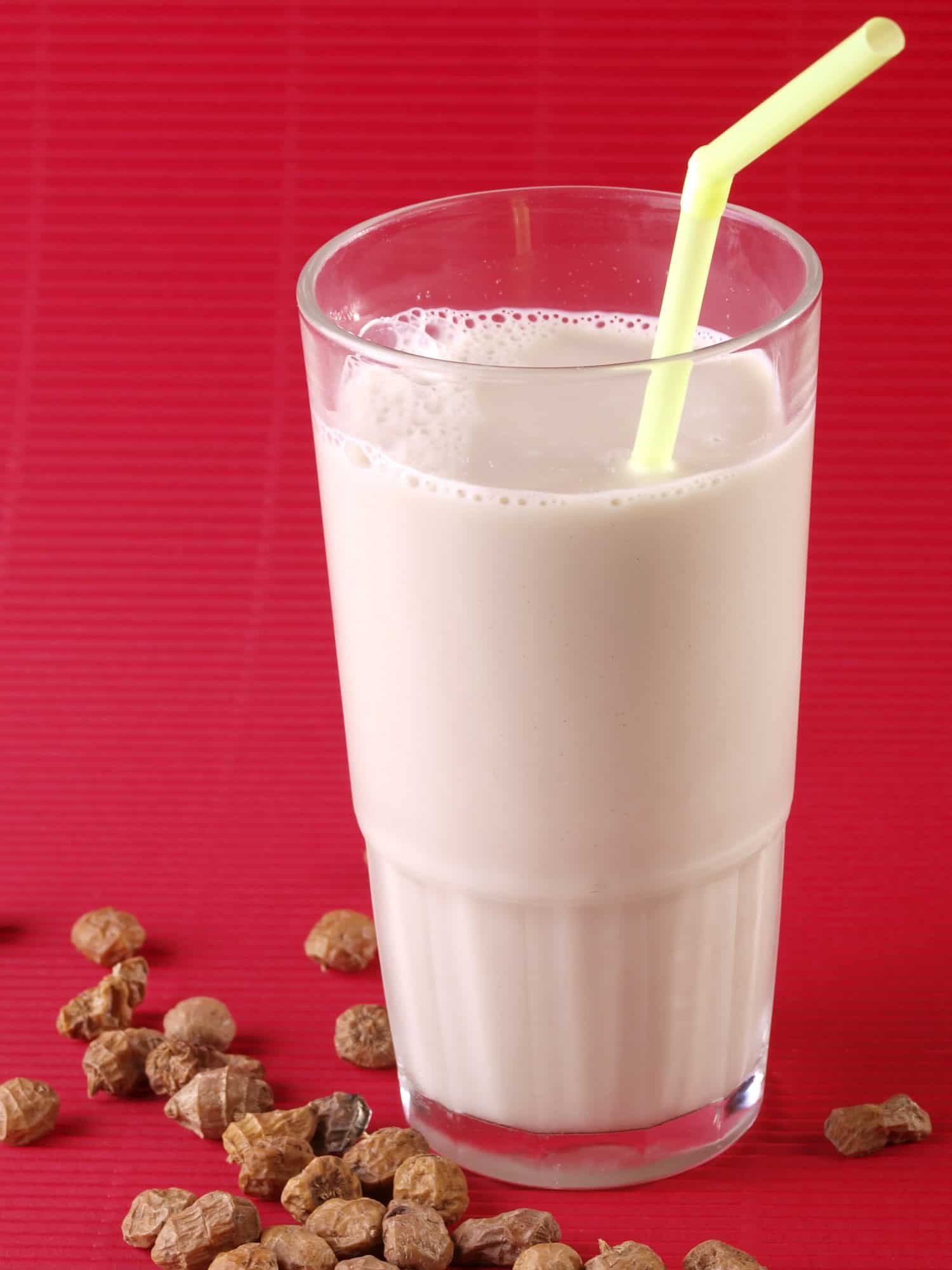
Horchata
I love horchata so much I felt it needed its own entry.
Horchata is so popular that in Mexican supermarkets you can find a powder or syrup where you just add water (not recommended).
While horchata exists all around the world, sometimes with different names, it’s most popular in Mexico.
It’s a rice-based drink sweetened with sugar and often with cinnamon and vanilla.
This Mexican drink is served as an inexpensive agua fresca option; however, horchata ingredients vary so it can be quite elaborate.
You may need to ask around to find out where to get the real thing instead of the syrup mix.
If you’re not buying the cheapest street stall version it’s common to have almonds in it. And my absolute favourite was in Campeche, where they also used coconut.
Not the original horchata recipe. but oh so delicious.

Atole
Atole is a masa or corn hominy based Mexican drink that is from the Mayan times – and yes Mayans still exist in Mexico.
They were not killed off by the Spanish conquistadors.
Particularly in traditional areas, such as the Mayan Riviera, you can find street vendors selling atole.
As well you can find very refined versions in tourists restaurants.
It’s a simple recipe of masa, unrefined cane sugar, water, cinnamon and vanilla. Atol recipes can vary by region and include milk, rice or wheat.
Sometimes it’s blended well and very thin and other times thick like porridge.
It’s not only a Mexican drink, but also one of the most popular Honduran drinks.
And depending on where you are in Mexico, it may also be called atolli or atol de elote – with elote signifying corn.
If you’re looking for a local spot for this Mexican drink start with places that serve tamales as it’s commonly eaten together.
It’s also a very popular Day of the Dead food.
‘Champurrado
While Mexican chocolate is some of the best in the world. Champurrado is much more than simply a Mexican hot chocolate.
It’s an atole with chocolate and may also have other spices. And it shows just how engrained chocolate has been in Mexican culture for centuries.
This is a warm but thick Mexican drink, it’s meant to be filling.
It is traditionally hand mixed with a molinillo – which I think makes a fantastic souvenir for home cooks if you can find one.
But many people also just a blender because…well it’s faster.
When ordering a champurrado be aware that sometimes, especially during the Christmas season or Las Posadas, it may also have alcohol in it.
‘Mexican Soda
When I first started traveling in Mexico in 2010 I noticed something strange, I loved all the Mexican sodas even though I didn’t drink pop/soda at home.
Why are orange Fanta and Coca Cola SO GOOD? Why did they taste as good as I remembered as a child?
Well it’s quite easy. Somewhere in my childhood soda companies moved from sugar-based drinks to cheap high-fructose corn syrup to save money.
But as sugarcane is still cheap in many Latin American countries they stuck with sugar.
And sugar is soooo good…in moderation of course.
In the Mayan Riviera it’s common to drink Coke with cochinita pibil, a type of Mexican pulled pork, for breakfast.
It seems odd but it’s a local tradition you should try.
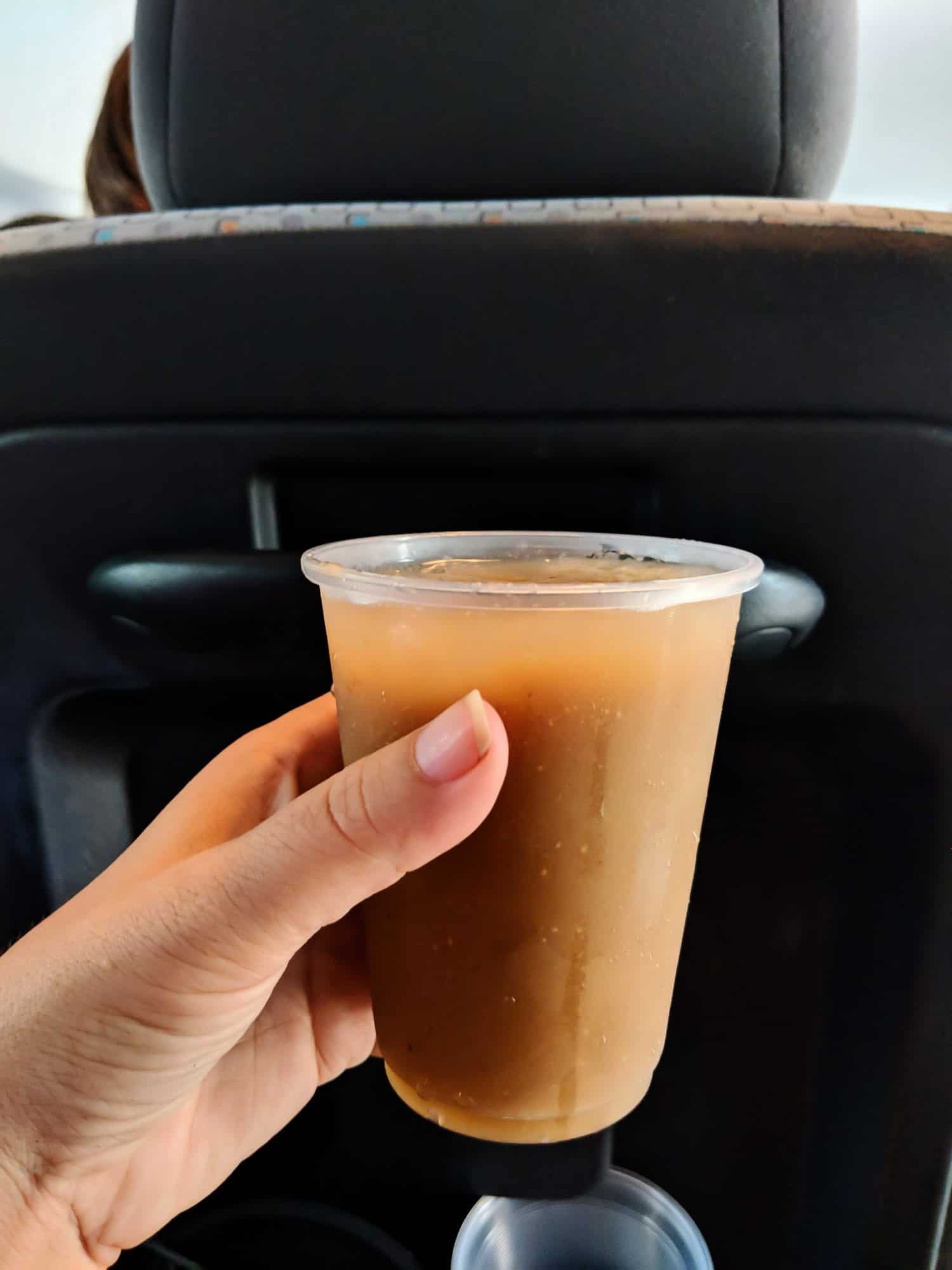
Tejuino
I think tejuino is a great example of how drinks in Mexico change from region to region even if they use similar ingredients.
I first had tejuino in Colima, on the west coast of Mexico. And drinks in Western Mexico are so different.
Tejuino is a slightly fermented corn drink using unrefined cane sugar called piloncillo (also known as panela in some countries), cinnamon, salt and lime over crushed ice.
They make this by mixing the ingredients, boiling them and then allowing it to slightly ferment. It is served cold with a bit of lime juice and salt.
You need to find a street vendor to order this but they are common in all the squares, just ask around.
The flavour is like nothing you’ve had. In the beginning it seems odd as it
‘Tepache
Another western Mexico drink, tepache is often sold by the same street vendors that will have tejuino.
The principle is the same, but tepache is a fermented pineapple drink, that may have other fruit in it depending on the season.
It can be a sweet, but sour and tart drink.
Tepache ferments in a barrel for a couple months so technically it is an alcoholic drink in Mexico but it is rarely more than 2% alcohol.
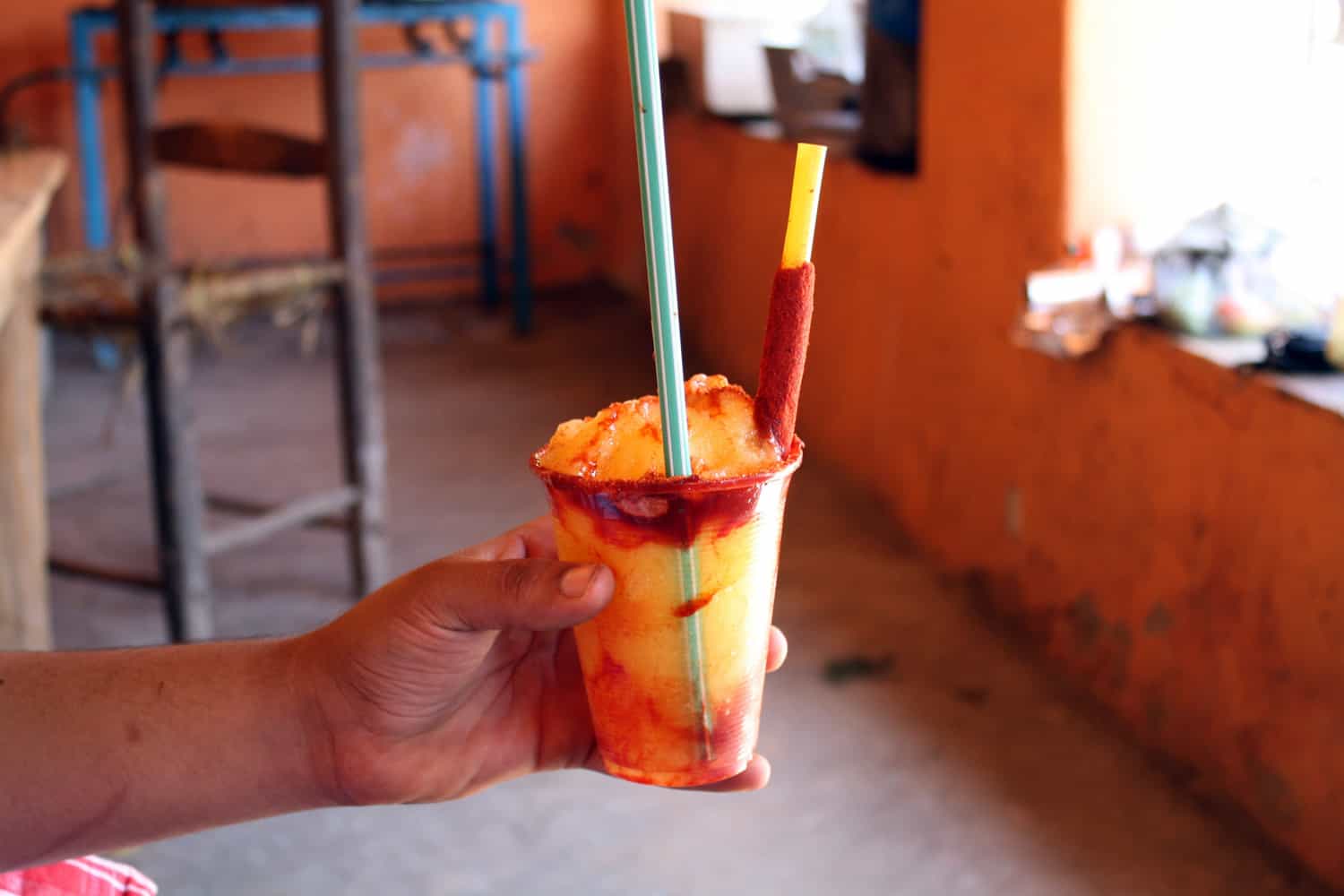
Chamoyada
Drinks in Mexico are famously colourful and refreshing.
Also known as raspado in Panama and a popular Colombian drink, it’s a great mix of spicy and sweet.
It is simply shaved ice topped with chamoy, fruit, chili and whatever else the street vendor has on hand.
Don’t be surprised if you see gummy candy.
Chamoy is a sauce in Mexico made from pickled fruit, somewhat similar to Japanese umeboshi.
You’ll find it in many Mexican drinks, including some of the crazier micheladas.
‘Tejate
Like many drinks in Colombia, Mexico has many traditional drinks made from corn.
Tejate is a traditional pre-hispanic corn-based drink in Mexico, from the Oaxaca region.
It’s an elaborate drink made from maize, toasted cacao beans, mamey sapote seeds and dried rosita flowers or cacahuaxochitl.
It’s made into a paste and combined with water to create a foamy top. You’ll find in big vats served in bowls made from gourds.
It’s an acquired taste so it may be best to share a bowl to try it the first time.
‘Jugo Verde
Long before it was trendy Mexico and most of Latin America were serving up fruit and veggie smoothies.
Jugo verde literally means green juice and you can buy it at a fraction of the price of hipster shops at home.
Mexican Ponche
Peanut milk with alcohol is healthy right?
Colima is home to many delicious drinks including ponche, which is a traditional cocktail that can be made out of tamarind, almond, peanuts, coffee or cashew like I had.
It may or may not have alcohol. Ask first.
When I shot this I thought it was non-alcoholic but afterwards I had a bit more and realized it indeed had alcohol and was delicious like a light eggnog.
If you’re looking for something a bit stronger this traditional cocktail uses mezcal with local flavours such a tamarind, pomegranate, peanut or coffee.
Ponche simply means punch in Spanish so there are many versions of this drink in Mexico.
It is very common during Christmas in Mexico.
Mexican Cocktails and Spirits
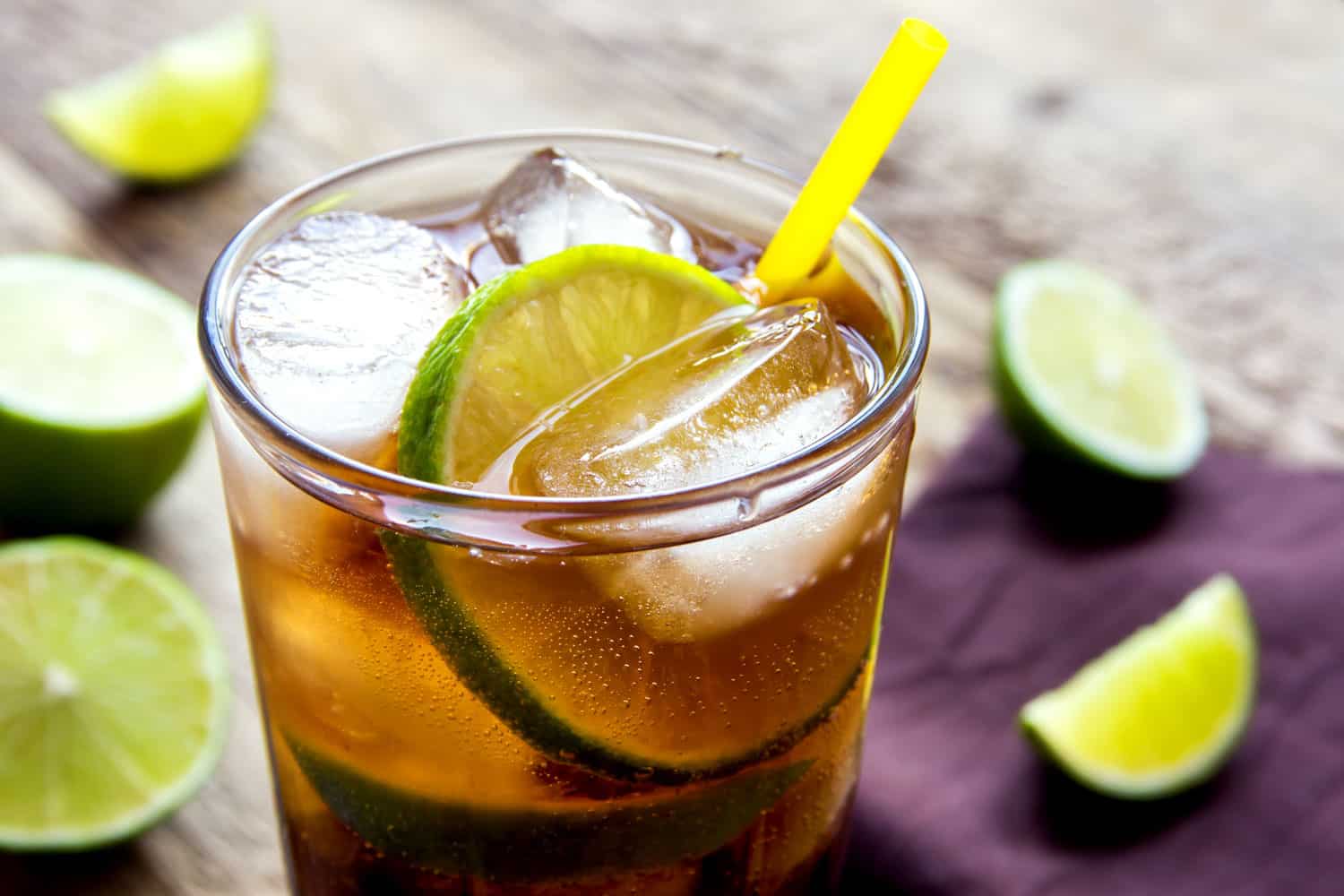
Charro Negro
One of the simplest Mexican cocktails is charro negro, which means black cowboy.
It’s one of the most basic alcoholic drinks in Mexico with tequila, coke, lime and salt.
Some people salt the rum but I think that’s excessive. I don’t need everything to be a rimmed drink in Mexico.
Think of it as a tequila Cuba Libre cocktail.
No one seems to know the origins of the name of this cocktail. Mexican folklore features El Charro Negro who would appear at dusk when loved ones died, sometimes handing out gold coins.
Because of this legend it’s a popular drink for El Dia de Los Muertos, where people celebrate their ancestors and remember those who have passed on.
Kahlúa
Did you know Kahlúa was from Mexico? I assumed it was some kind of Hawaiian inspired drink.
But this coffee-flavoured liquer was created in 1936 in Mexico using arabica coffee, rum, vanilla and sugar.
And it’s not a name in the Hawaiian language at all, instead in the Veracruz Nahuatl language it means house of the Acolhua people.
‘
Pox
Pronounced posh, this Mexican spirit is becoming one of the biggest trends in Mexican cocktails.
It’s a sprit that was originally produced by the Tzotzil Mayans in the Chiapas highlands near San Cristóbal de las Casas.
It was used in ceremonies aby warriors and priests as a means to visit the underworld. It means medicine or cure was used by healers or h’iloles.
Sikil Pak
Today it is still used in festivals in rural communities including San Juan Chamula, Chiapas.
Everyone has their own recipe, which is heavily guarded. At its heart pox is fermented maize and may also have wheat and sugar cane.
It is now being commercially produced and often has a sweet but smokey flavour. In recent years it’s entered the United States for high-end cocktails.
‘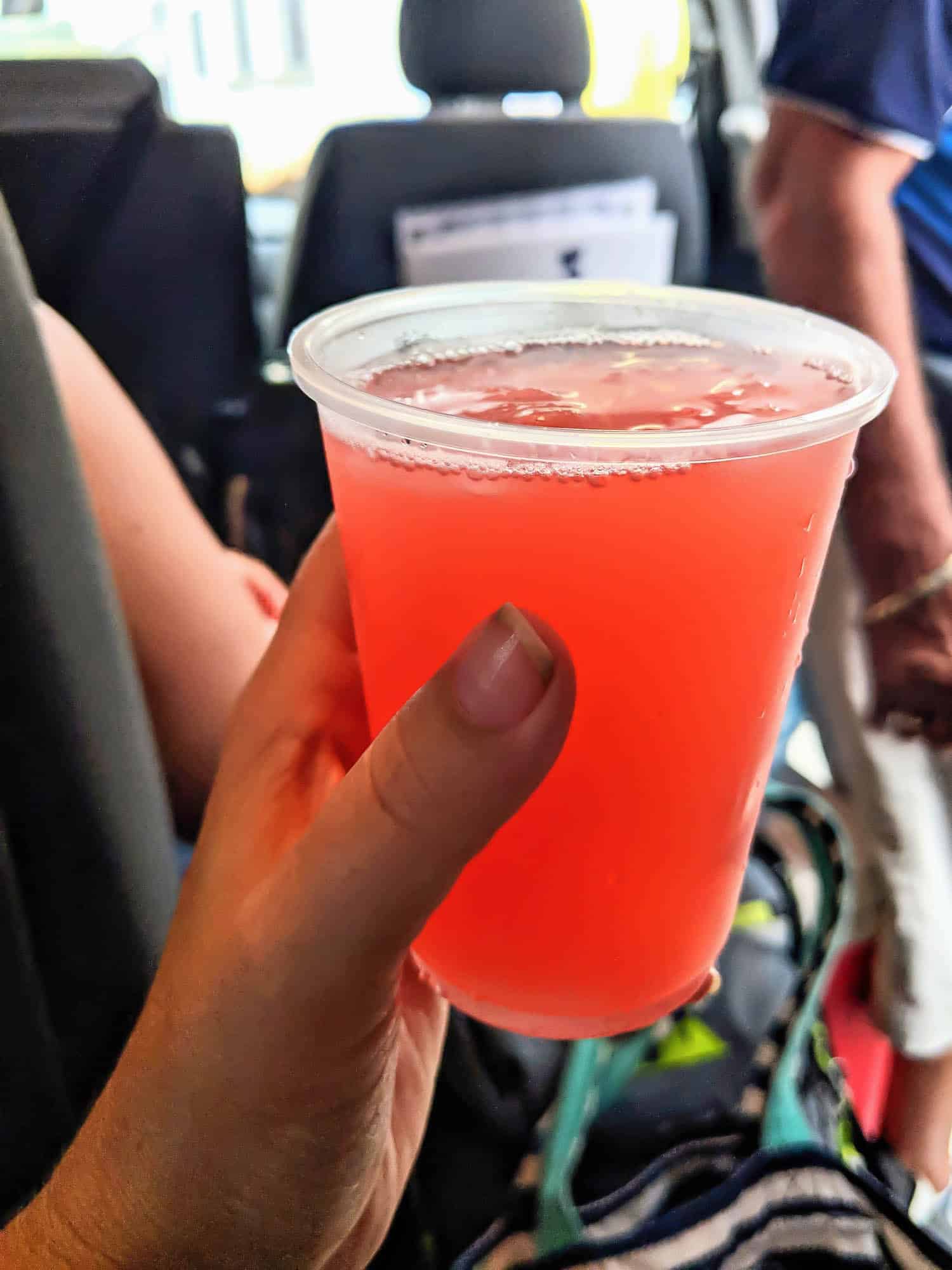
Tuba
Sold by street vendors in western Mexico, tuba looks like a fruit drink but make no mistake it’s alcoholic.
In coastal towns like Puerto Vallarta you’ll see men walking the street holding a painted gourd yelling TUUUUUUBBBBBAAAAAAA. You can’t miss them.
Another one of the delicious fermented drinks in Mexico, this one uses coconut palm tree sap.
It’s not easy work, they need to climb the tree to collect it from the flowers of the coconut.
Good vendors will also top the drink with toasted peanuts. As it’s fermented it has a sweet and sour flavour. Locals swear it’s good for an upset stomach.
Xtabentún
Honey is a very important ingredient in the Mayan Riviera and Yucatán region. Locals often have a spoonful daily to stay healthy and swear by its medicinal properties.
Xtabentún is made by taking fermenting the honey from xtabentún flowers (also known as morning glory) with anise and then adding Mexican rum.
The Mexican honey liquer tastes like sweet anise or similar to an ouzo. You can sip it straight as an aperitif and it’s becoming trending to use it in cocktails in Mexico.
Balché
One of the more difficult drinks to find in Mexico. It’s related to xtabentún and is also a Mayan drink.
In this case balché uses saayab tree bark, soaked in melipona honey and water to ferment.
At one time it was a popular drink for rituals and spiritual uses but when the Spanish arrived they destroyed all of the trees used to make it.
‘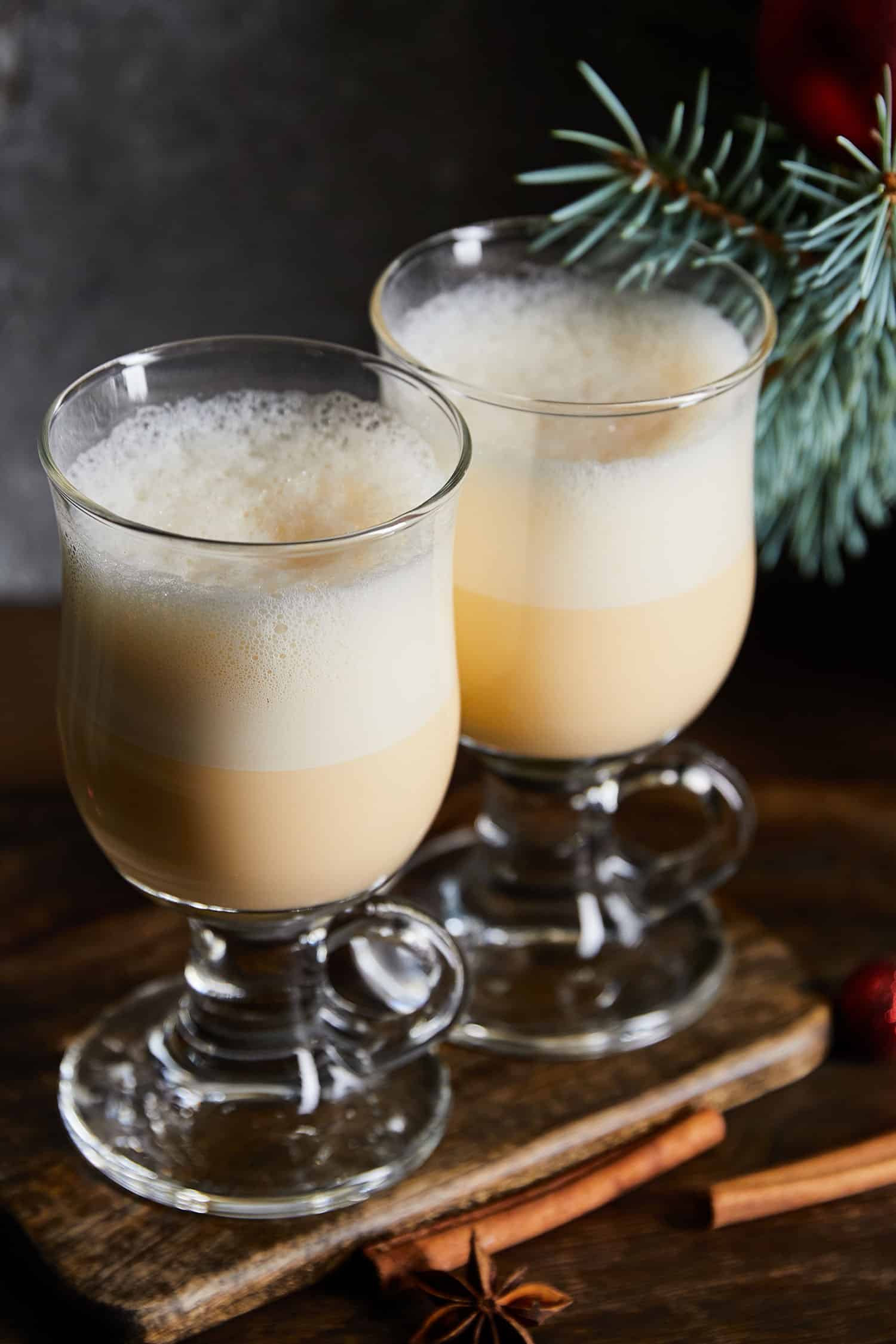
Rompope
Eggnog really is one of the great cocktails around the world. Everyone has a different name for it, in Cuba it’s called crema de vie or cream of life.
In Mexico it is called romepope and they say the Santa Clara nuns invented it in Pueblas in the 1600s.
It can be made with Mexican rum or brandy, milk, sugar and egg yolks. Like traditional eggnog recipes may include vanilla, cinnamon or nutmeg,
Traditionally drink rompope warm but it’s also available on ice, and during the holidays it’s popular in ice cream or desserts.
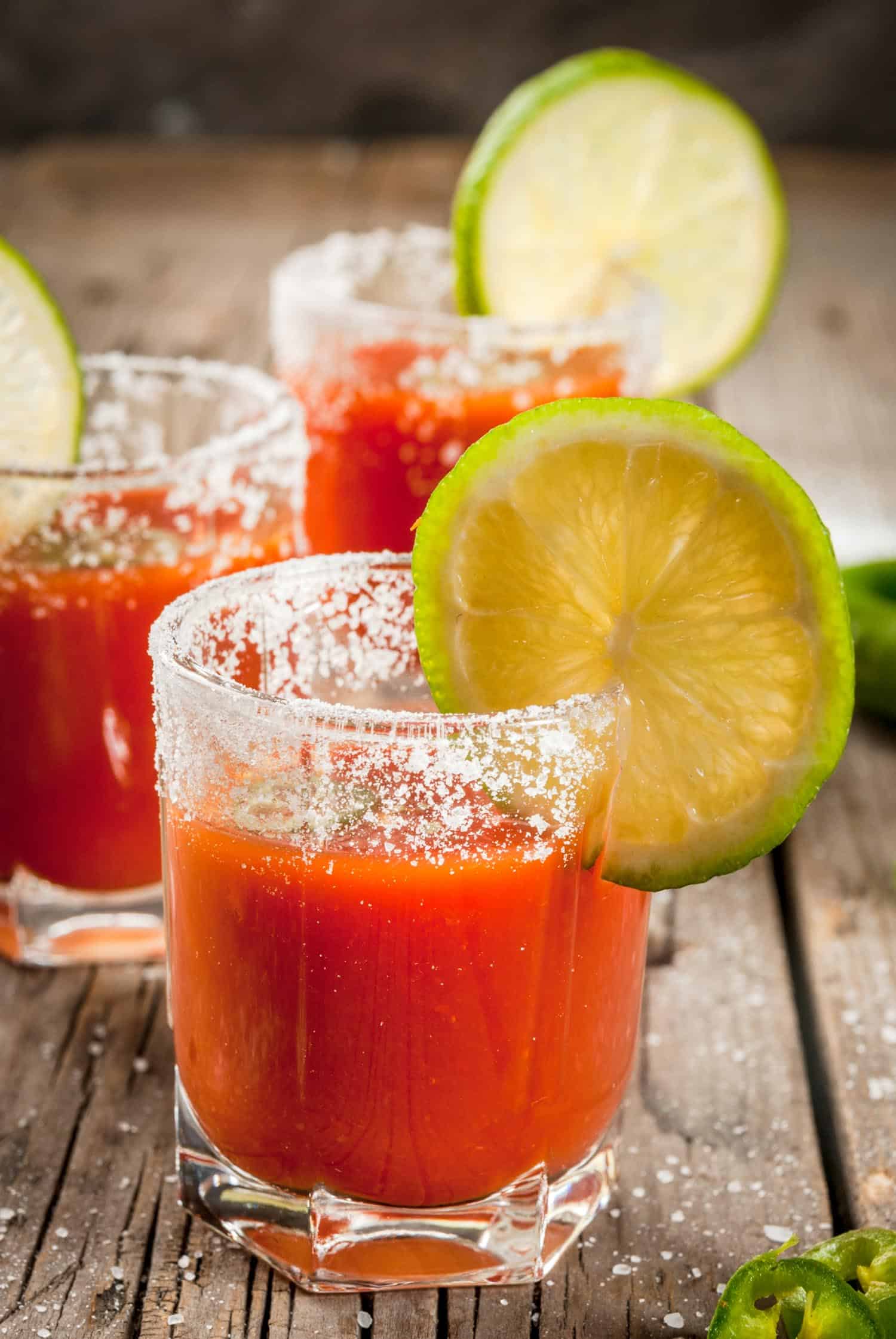
Sangrita
One of the most misunderstood drinks in Mexico. A lot of spring breakers think this is a tequila shot chaser.
It’s not a chaser but a palate cleanser and you don’t need to shoot either.
Quality high-end Mexican tequila is sipped, not shot.
You alternate sipping the tequila and the sangrita to enhance the tequila drinking experience, enjoying its flavour.
Pulque
Pulque is considered one of the oldest pre-hispanic Mexican drinks.
Originally from Central Mexico, it is made by fermenting agave plant sap and was originally for the upper crust of society in Mexico.
Today it is usually home brewed and some pulquerías still exist in Cholula, Tlaxcala, Puerto Escondido Oaxaca and even in Puerto Vallarta.
Some is commercially manufactured and has an alcoholic level similar to beer at less than 6%.
Although it is making a comeback, its sour yeasty flavor is divisive. I love it and think kombucha drinkers can appreciate the tanginess.
You can also try it as a curado, which mixes pulque with fruit juice making it a bit more appealing for those who are hesitant.
Tuxca
Although I didn’t want to mention all the individual craft spirits I think tuxca is interesting enough to seek out.
An alcoholic drink that ferments sap from local agave plants. Yes fermented sap was a popular indigenous tradition in Mexico.
Named after a town near a volcano in the Jalisco region, Tuxcacuesco.
Made similarly to mezcal what separates this sap ferment from others is that it ferments in volcanic rock.
As “ancestral spirits” are becoming popular in trendy bars in Mexico and the United States it is becoming easier to find outside Jalisco.
‘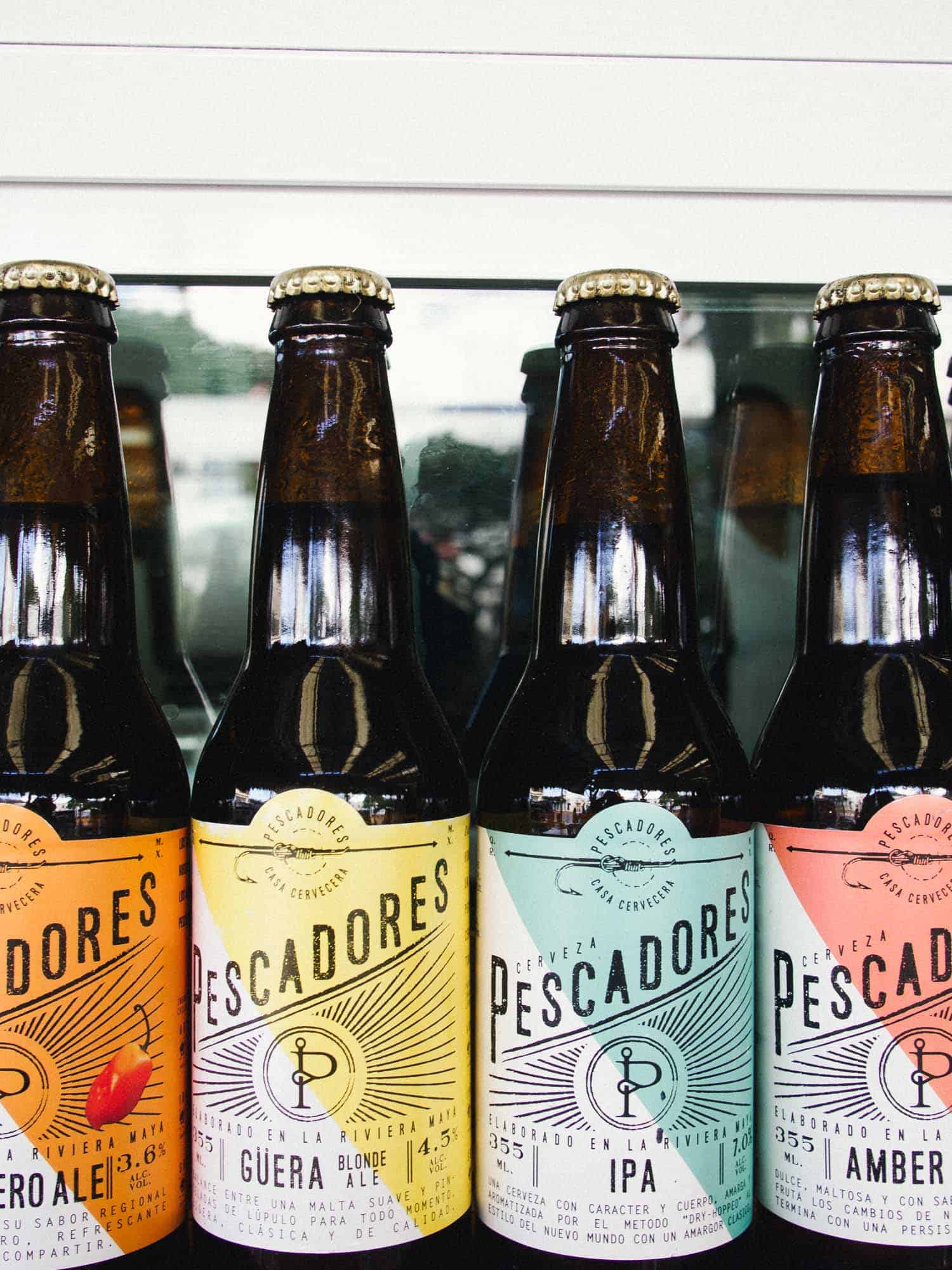
Mexican Beer
Yes of course you’ve heard of Mexican beer, but perhaps your knowledge is limited to the worst one? Also known as Corona.
There are lots of mainstream beer in Mexico, and if you go to the local OXXO convenience store Dos Equis, Tecate, Bohemia and Pacifico are often on sale.
But there’s also an emerging industry of craft beer in Mexico and it’s pretty spectacular.
You’ll find typical styles you know along with some that use local ingredients for very interesting flavour profiles.
‘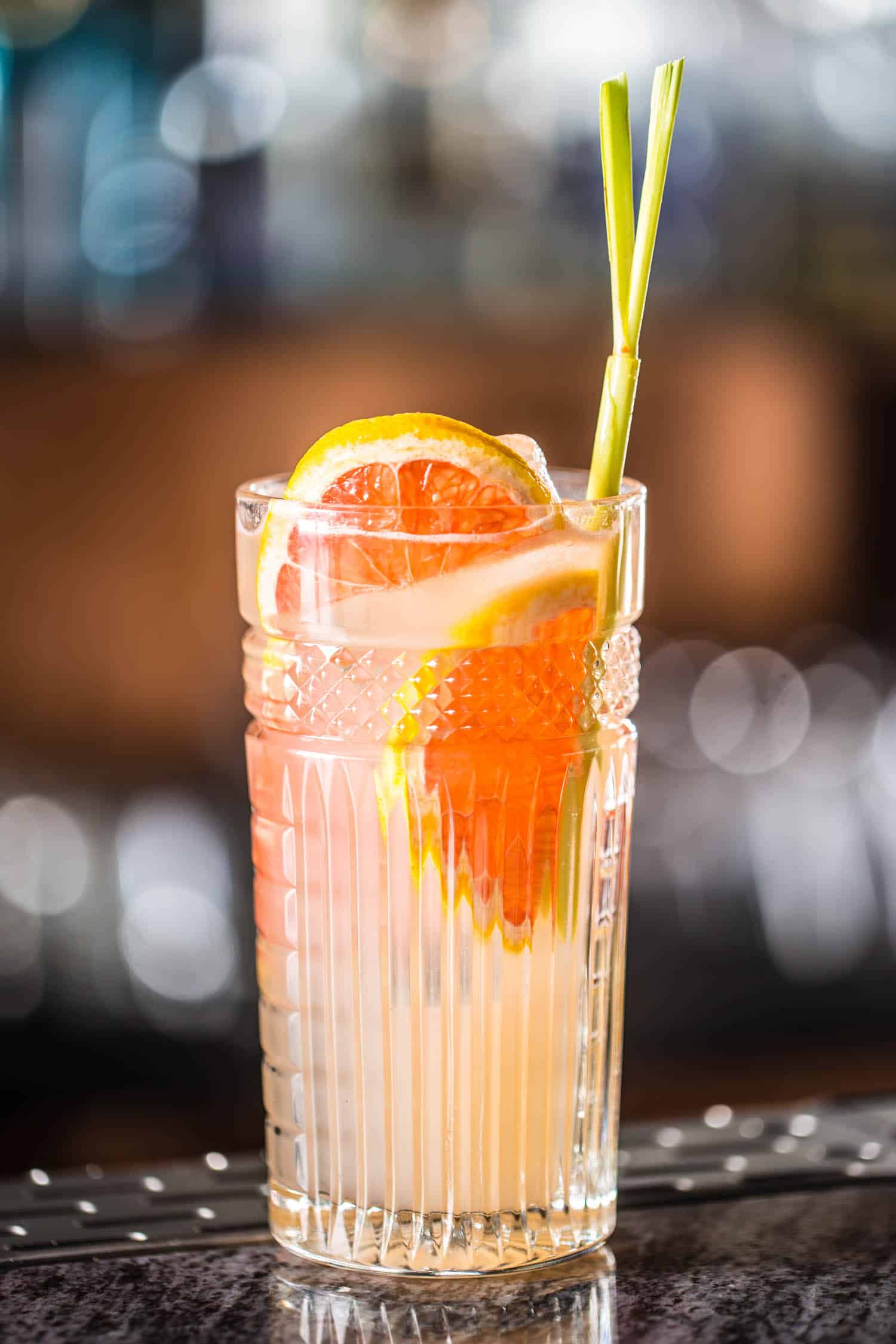
La Paloma
One of the most popular Mexican cocktails, paloma means dove in Spanish.
This simple Mexican drink is made with tequila and grapefruit soda (Fresca, Jarritos or Squirt) served over ice then garnished with lime or other citrus.
It’s really that simple.
It’s so simple a lot of convenience stores now sell pre-made palomas in cans.
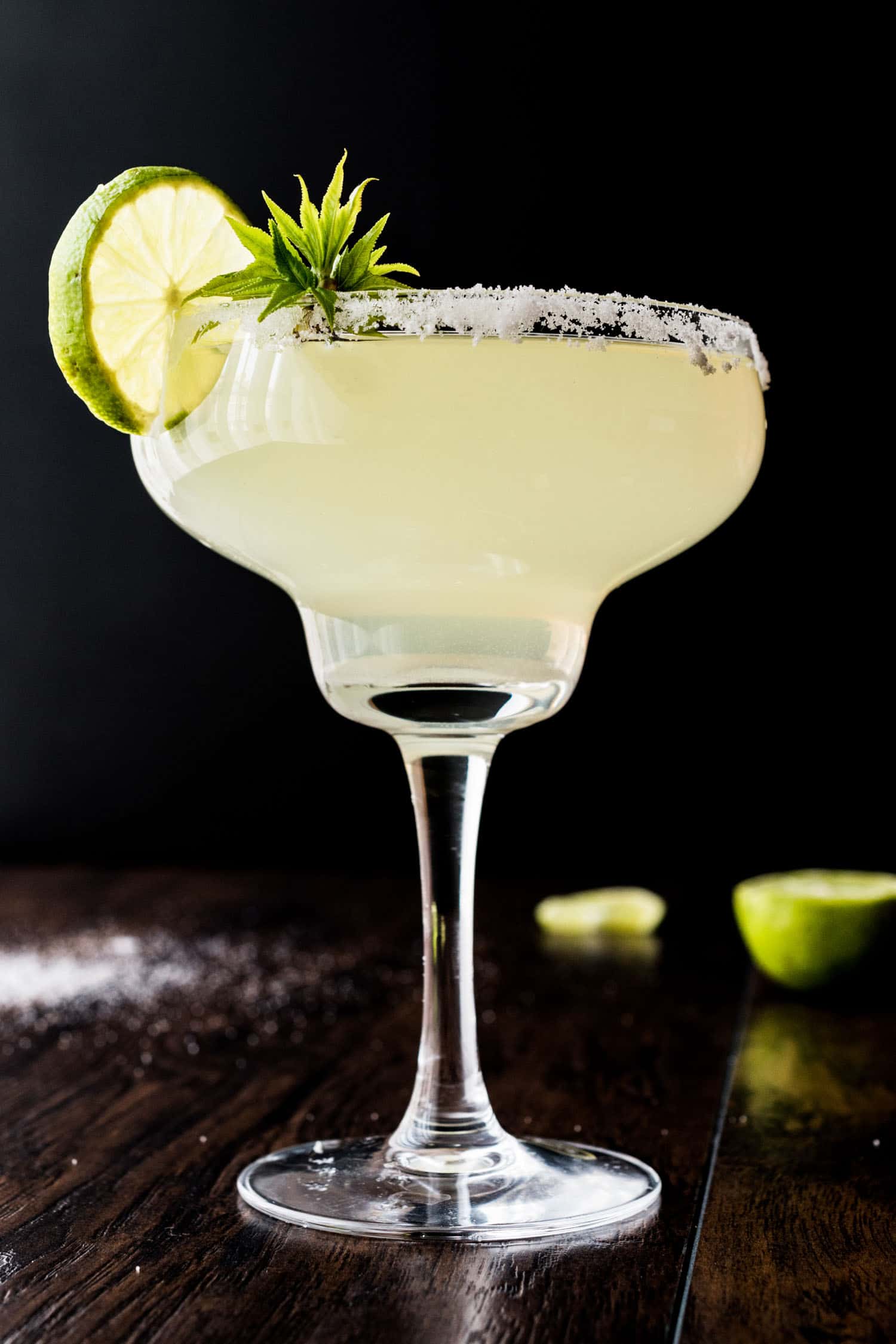
Margarita
Perhaps the most popular drink for tourists coming to Mexico?
The original margarita is a tequila based cocktail with orange liqueur (Triple Sec) and lime juice served on the rocks over blended into a salt rimmed glass.
There are so many variations of the margarita recipe and not all of them are good.
In places like Playa del Carmen tourist restaurants serve it in a giant glass with two Corona beer tipped into them.
Who orders that?
I prefer mine on the rocks because there’s less chance they are using some kind of margarita syrup mix.
The real deal uses fresh lime and it’s very a refreshing drink.
Bloody Maria
Basically a Bloody Mary but it uses tequila instead of vodka. Sometimes it’s closer to the Canadian Caesar drink and uses Clamato instead of tomato juice.
Mexican Beer Cocktails
Michelada
I love a good beer cocktail and Mexico is home to SO many of them!
Cerveza preparada (prepared beer) is a Mexican term for beer mixed with tomato juice, hot sauce, or salsa.
The drink dates back to the 1940s, when it became popular in Mexico.
It’s known as a hangover cure but is also great for brunch too. On menus you order the beer you want and the michelada is an add on.
They’ll give you a glass with the mixture and you can pour how much beer you’d like into it.
Michelada ingredients include:
- tomato juice or clamato juice
- lime juice
- salt, chili
- soy sauce
- Worcestershire sauce or “salsa inglesa”
In Mexico the michelada recipe can vary greatly. And the name for it too as the drink and its variations continue to evolve (see below).
In some regions a Michelada is called a chelada or some have Maggi sauce or chamoy powder. Some micheladas come with oranges or chili peppers.
Remember the country is huge so no one agrees to one recipe for drinks in Mexico.
It’s a fun surprise each time.
. ‘Chavela
Think of the chavela as the light version of a michelada. The traditional Michelada uses a dark beer, whereas chavelas always use light.
Chavela usually have fewer incredibles and are simply tomato juice, beer and hot sauce in a Tajin rimmed glass.
Oddly enough they are often served with a shot of tequila. So not exactly that light.
‘Michebomba
Also known as Gomichela, Michegomitas and Micheparty.
Every Friday in Felipe Carrillo Puerto I’d go with friends for a Michelada loca.
Sometimes they would be formal stands, like this place called Michebomba outside a convenience store, and sometimes they would just be in someone’s house!
We would stop off at the convenience store to buy the beer we wanted and then head over to get the fixings.
I had never seen micheladas like this before and thought it was some local, craze.
But then I discovered in other regions this drink in Mexico is called gomichela.
And what makes this beer cocktail different from the others is the addition of chamoy, gummy candy…and anything crazy you want to put in it.
For someone who doesn’t like sweet things I would always put WAY TOO MUCH candy in it and then feel sick.
Apparently a new one made it to the scene called Michetanque which just puts all the vegetables and fruit straight into the glass like a dip.
‘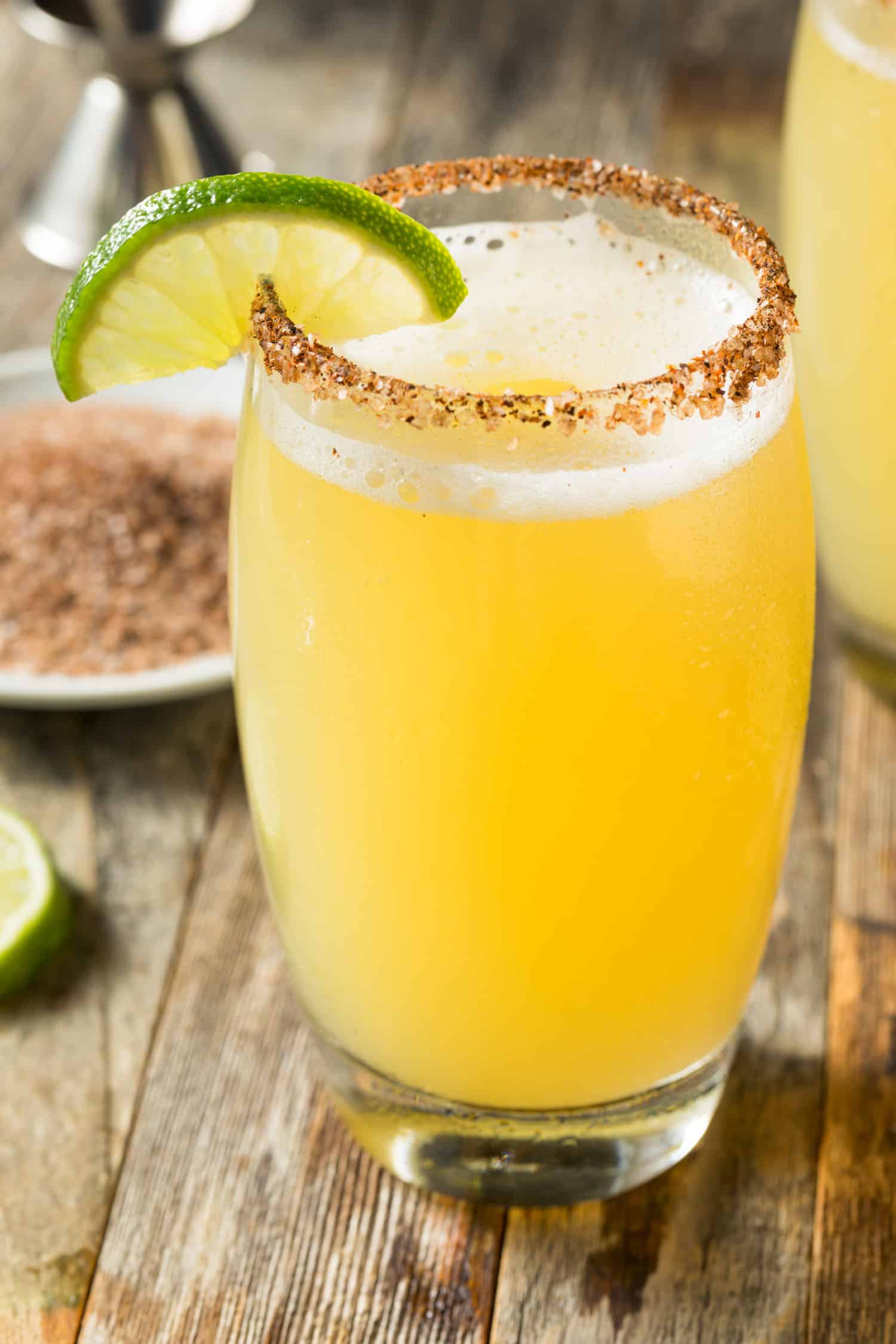
Chelada
This is my favourite of the beer cocktails in Mexico.
The chelada is the simplest isn’t spicy. It’s more like a beer shandy and is simply a light beer, lime juice and a salt rimmed glass.
The lime cuts through the beer and makes it very refreshing – nothing else needed! Although some Mexican antojitos are always a good idea.
What other drinks in Mexico did I miss? Let me know in the comments below!
‘Pin it: Mexican Drinks
